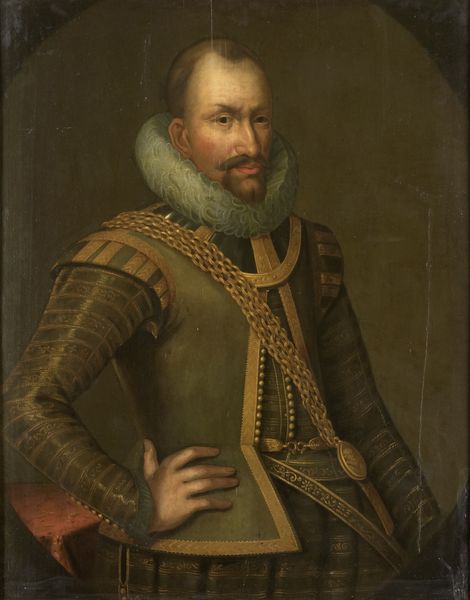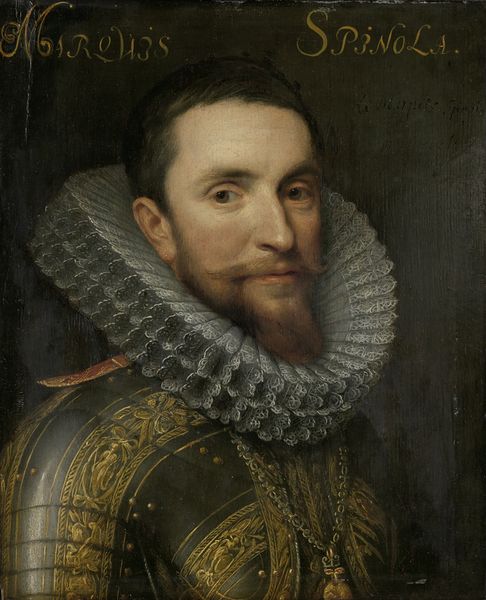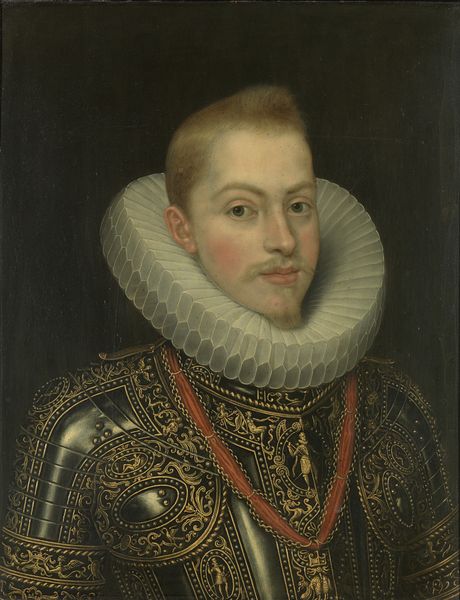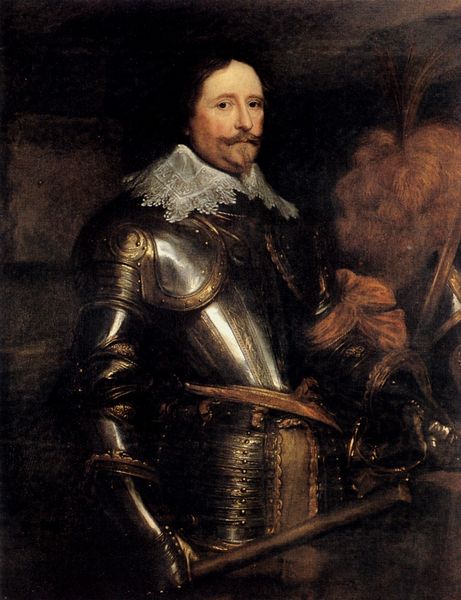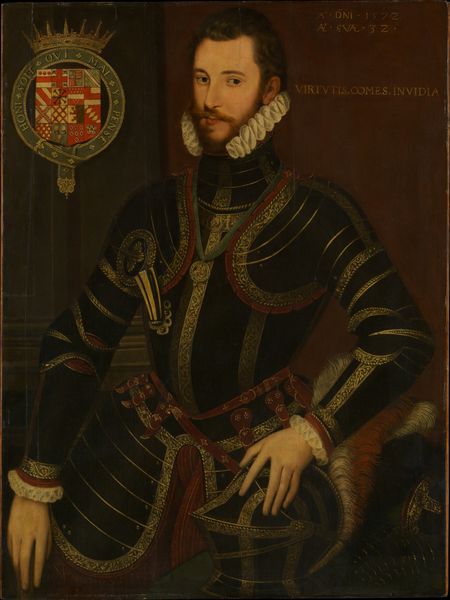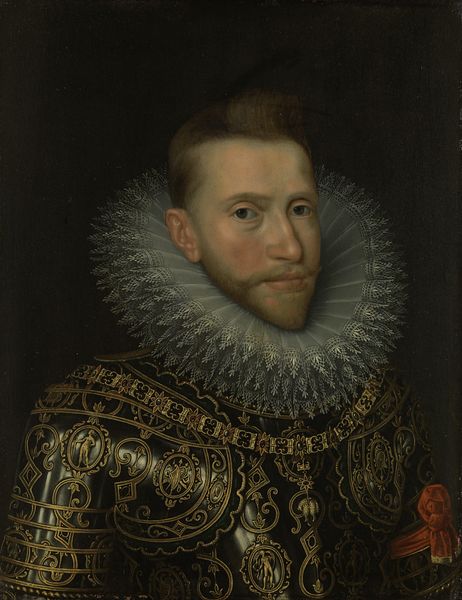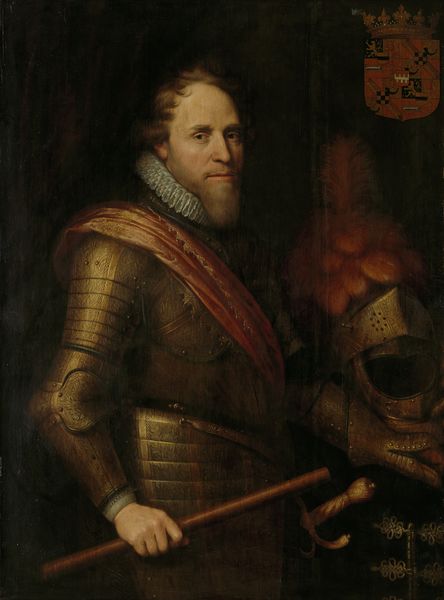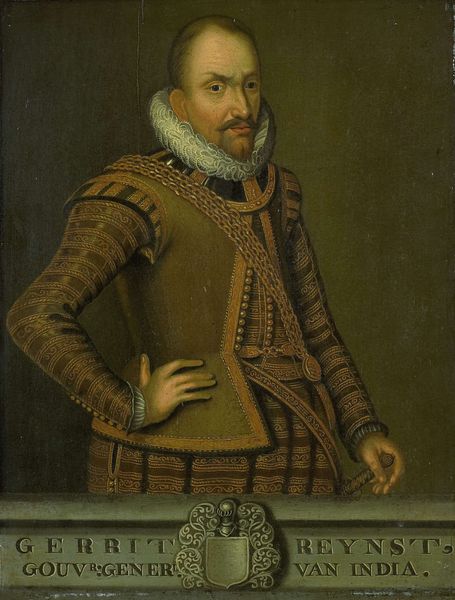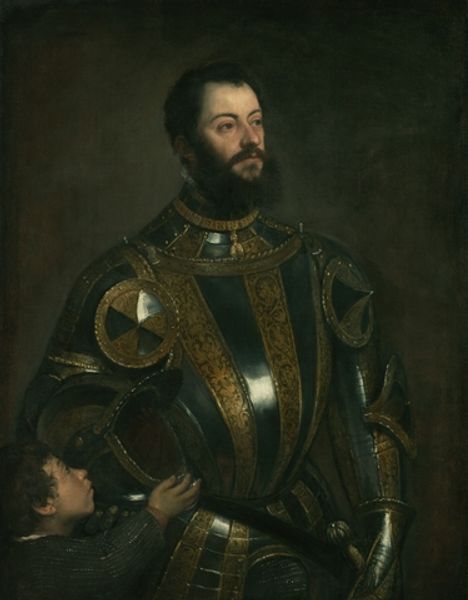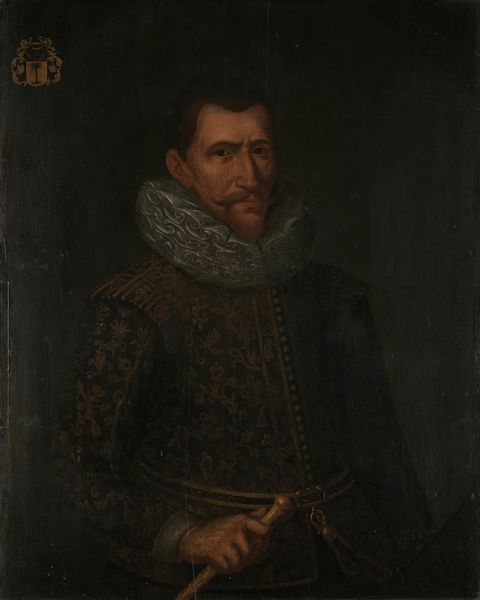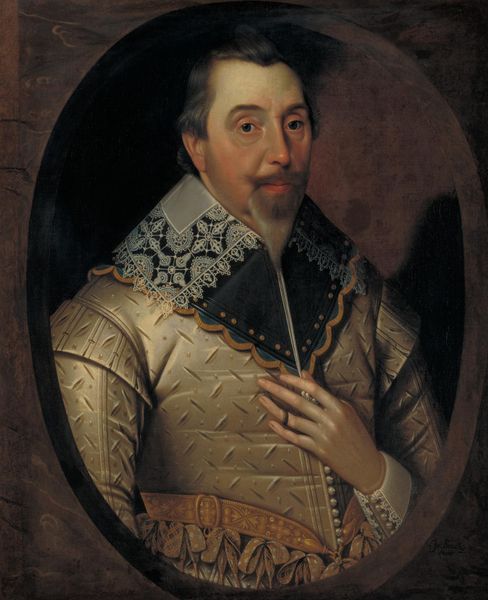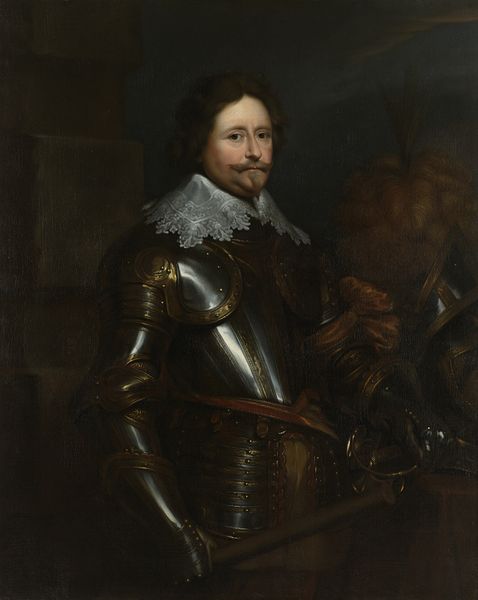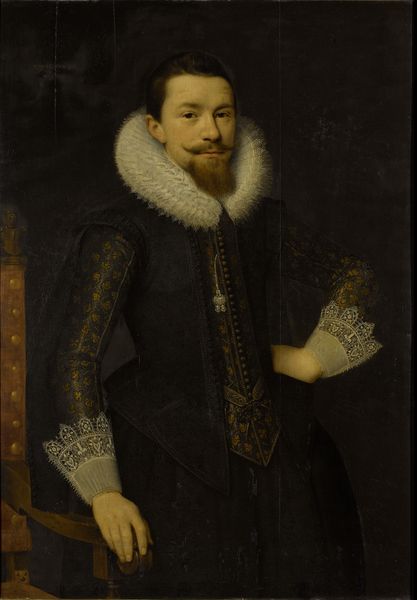
painting, oil-paint
#
baroque
#
portrait
#
painting
#
oil-paint
Dimensions: support height 119 cm, support width 87.5 cm
Copyright: Rijks Museum: Open Domain
Curator: Here we have Michiel Jansz. van Mierevelt's 1609 oil-on-panel portrayal of Ambrogio Spinola. Editor: Imposing. The darkness practically swallows him, yet his face and that remarkable ruff are brilliantly lit, pulling us in. Curator: Precisely. Mierevelt uses the Baroque tenebrism style to convey power. Notice how Spinola’s armor gleams with gold accents, and the meticulous detailing suggests a figure of high military rank and noble standing. This isn't merely a painting; it’s a declaration of authority. Editor: The armor certainly speaks volumes, visually sectioning and structuring the composition with complex decorative features that mirror social stratification. That large red feathered helmet, positioned so close, what to make of this addition? It dominates. Curator: The helmet and the baton in Spinola’s hand are both symbolic of military leadership, further enhancing the image of him as a formidable commander and leader of armies. Red, here, could stand for Mars, courage, sacrifice. A whole constellation of significations are possible, but leadership is a clear message. Editor: So, visually, it's layered. It’s also interesting to observe how the cool tones of the armor contrast so vividly with the warmth of his skin tones and those scarlet plumes. It amplifies a sense of controlled energy—restrained yet ready to burst forth. Curator: Think of this portrait in its time. The visual weight of the finery signifies a culture of patronage, hierarchy, and dynastic inheritance, rendered with symbols. But do you think people picked that up? How would you assess its significance? Editor: Today, as then, the artist manipulates light, color, texture, and detail for particular symbolic meanings and visual effects that signal hierarchy and project an image of power, just like that. A compelling image constructed and crafted for both its time and now. Curator: An effective synthesis of symbolism, history, and artistic flair, I must agree!
Comments
rijksmuseum about 2 years ago
⋮
Between 1601 and 1627 Ambrogio Spinola is by far the most important general of the Spanish army. During the Siege of Ostend, which lasts from 1601 to 1604, Spinola provides not only his services, but also his money for this cause. These additional means are most welcome, for now he can pay his troops should the funds from Spain be delayed. Under his command the Spanish army recaptures Oldenzaal and Groenlo, and in 1625 even the most important fortified city, Breda.
Join the conversation
Join millions of artists and users on Artera today and experience the ultimate creative platform.
